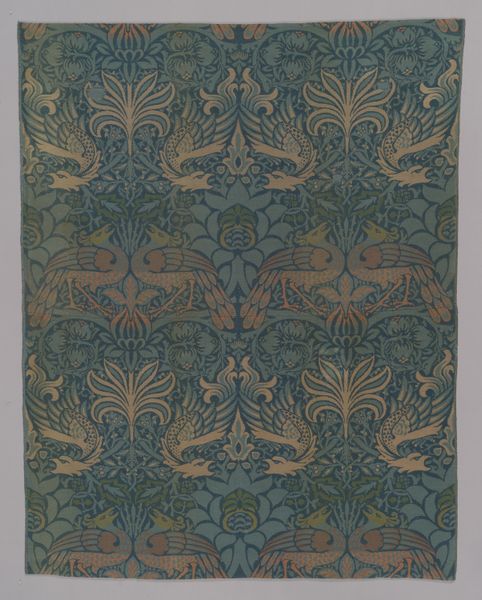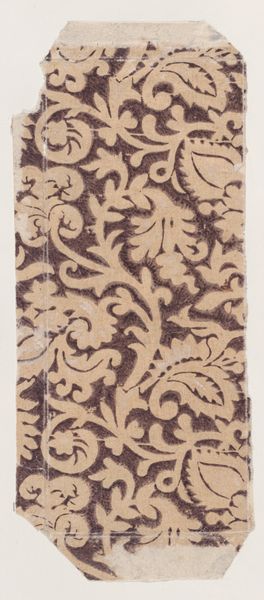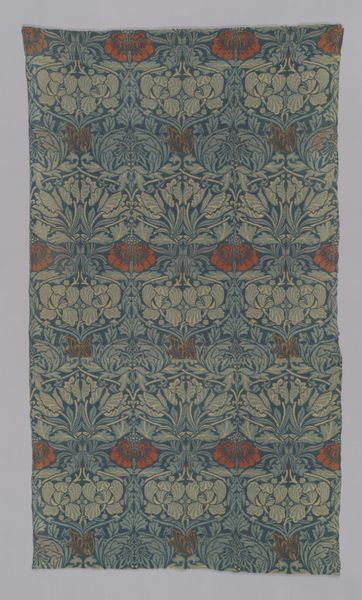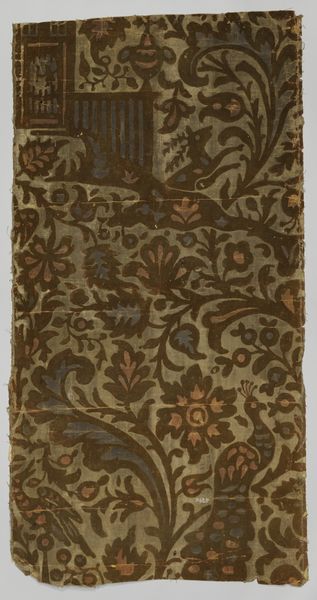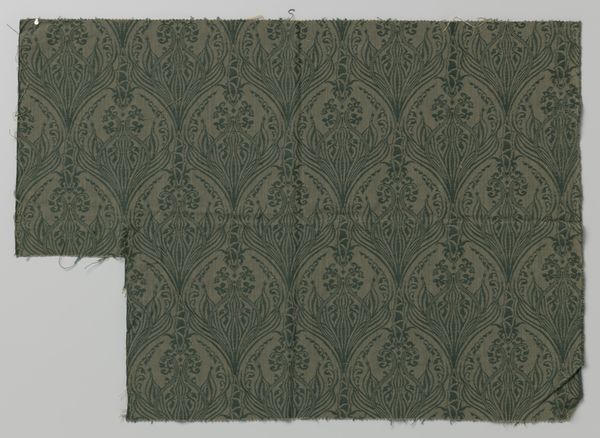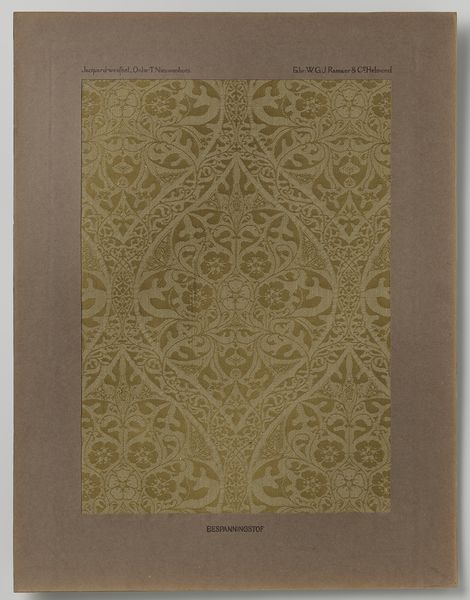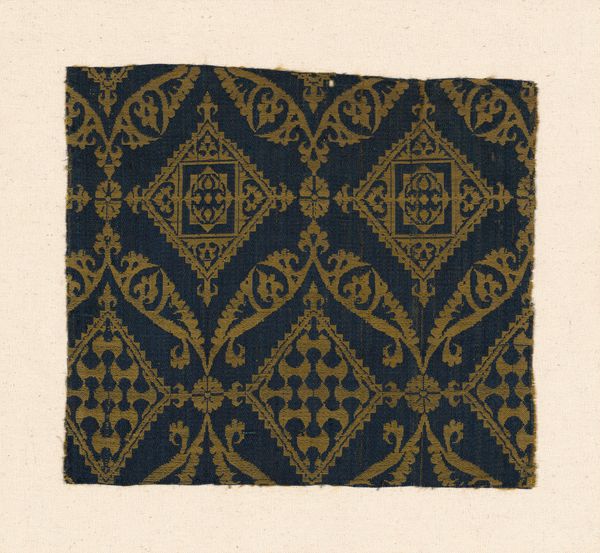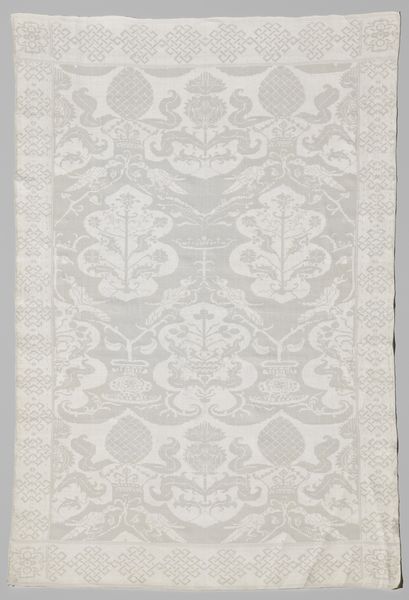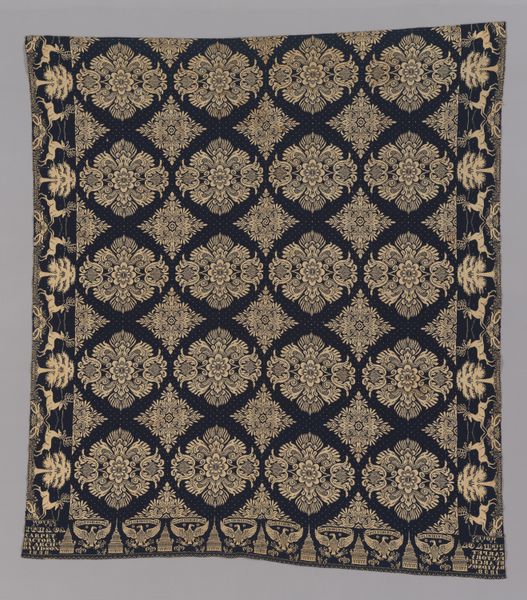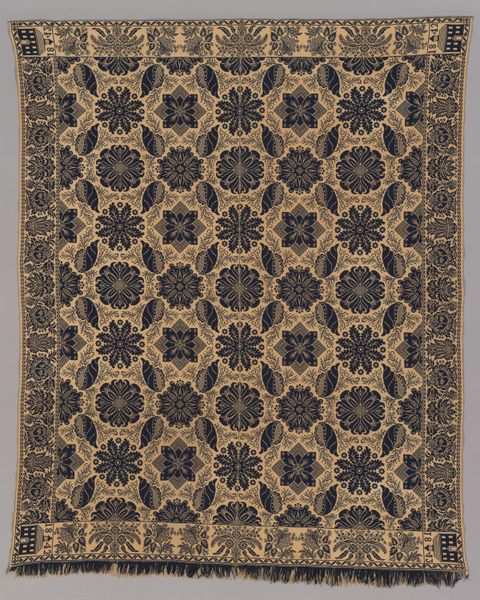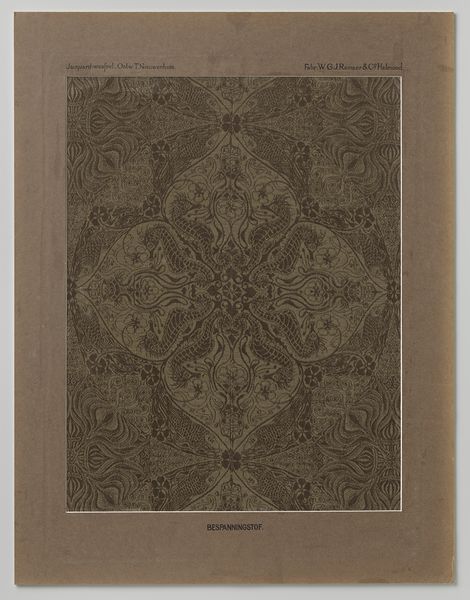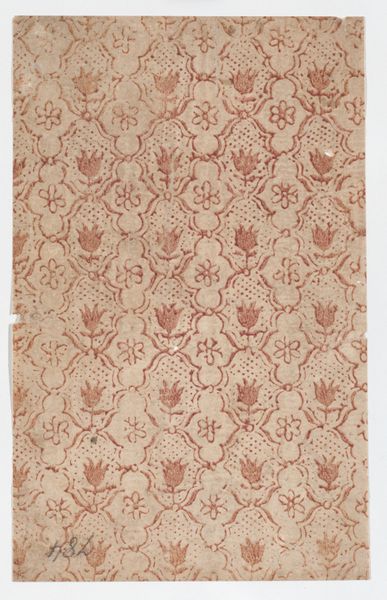
Ingeschoren trijp, dessin "Duinroos", in zachtpaars op geel c. 1920 - 1930
0:00
0:00
Dimensions: height 46.5 cm, width 62.5 cm, width 1 cm
Copyright: Rijks Museum: Open Domain
Curator: Here we have an intriguing textile work from the Rijksmuseum, created sometime between 1920 and 1930 by Theo Nieuwenhuis. It’s titled "Ingeschoren trijp, dessin 'Duinroos', in zachtpaars op geel," which translates to something like "cut velvet, design 'Dune Rose', in soft purple on yellow." Editor: My first impression is one of restrained elegance. The patterns, despite their complexity, are softened by what appears to be a muted color palette. The density of the design is interesting too. Curator: Absolutely. The overall composition shows clear influence from the Arts and Crafts movement, with its emphasis on handcrafted design and organic motifs. Notice how the “Dune Rose” pattern is subtly interwoven with geometric forms, achieving a nice visual tension. Editor: Considering the period, it's compelling to imagine how this textile might have functioned within the domestic sphere. Was it intended for upholstery, wall hangings, clothing? The 'Dune Rose' evokes nature, aligning with the period's broader yearning to connect to landscape through everyday objects. What societal need was Nieuwenhuis hoping to fill? Curator: That’s precisely where historical context enhances our reading. Arts and Crafts responded to industrialization, valuing artisanal skills. In this textile, the repetitive patterns establish rhythm, while color choice creates gentle contrast and balance. This creates the intended design, one that suggests harmony within a geometric framework. Editor: The use of muted colours could have been a design choice to match certain interior fashions during its time, adding warmth to rooms. Alternatively, the artist may have been reacting to something politically—its presence in homes would provide more context on if people accepted its design during that time. Curator: A superb point. As a scholar of formalism, my instinct is always to dissect the visual language first. However, it is also crucial to consider where such textile might hang as an art object during its life. Editor: Precisely, considering these interrelations gives the textile's existence a whole new lens of history. I appreciate that you have brought new techniques and understanding on form itself. Curator: Indeed, studying its pure construction brings the textile new appreciation, when coupled with external information that deepens understanding. Thank you for that, this exchange truly made me reflect about our understanding of design!
Comments
No comments
Be the first to comment and join the conversation on the ultimate creative platform.
